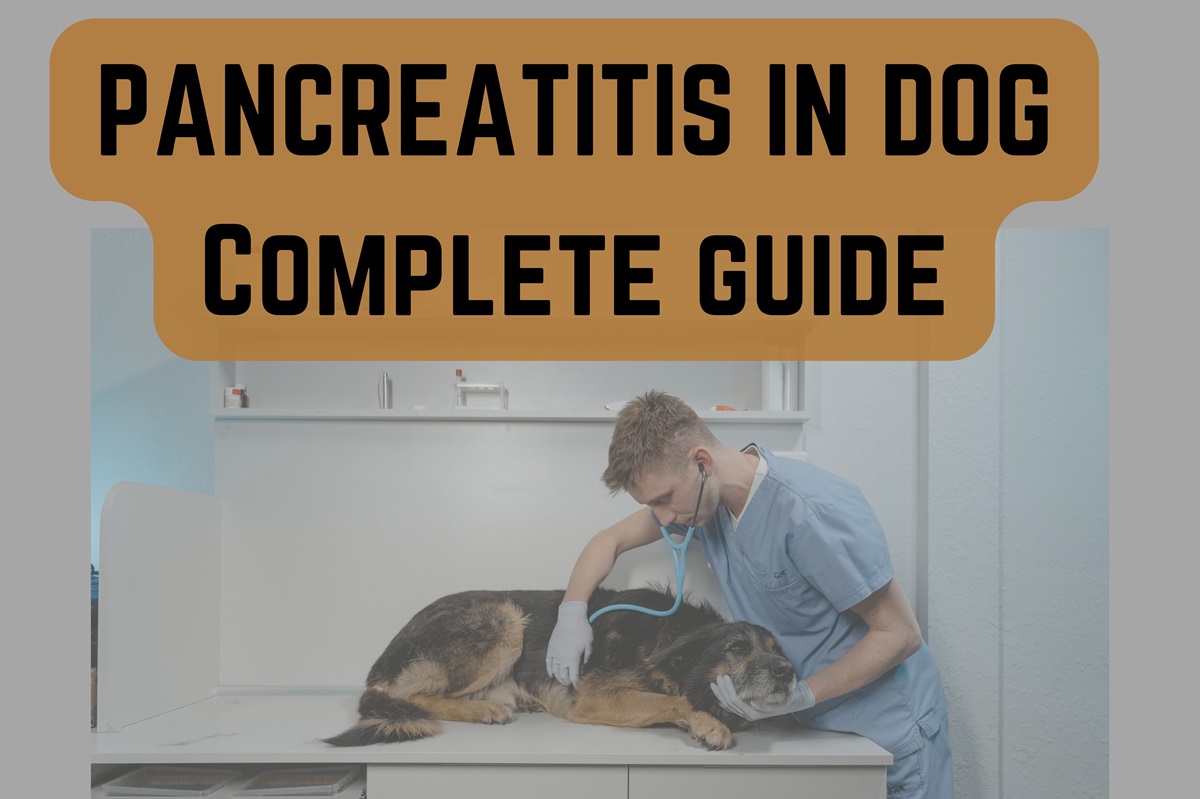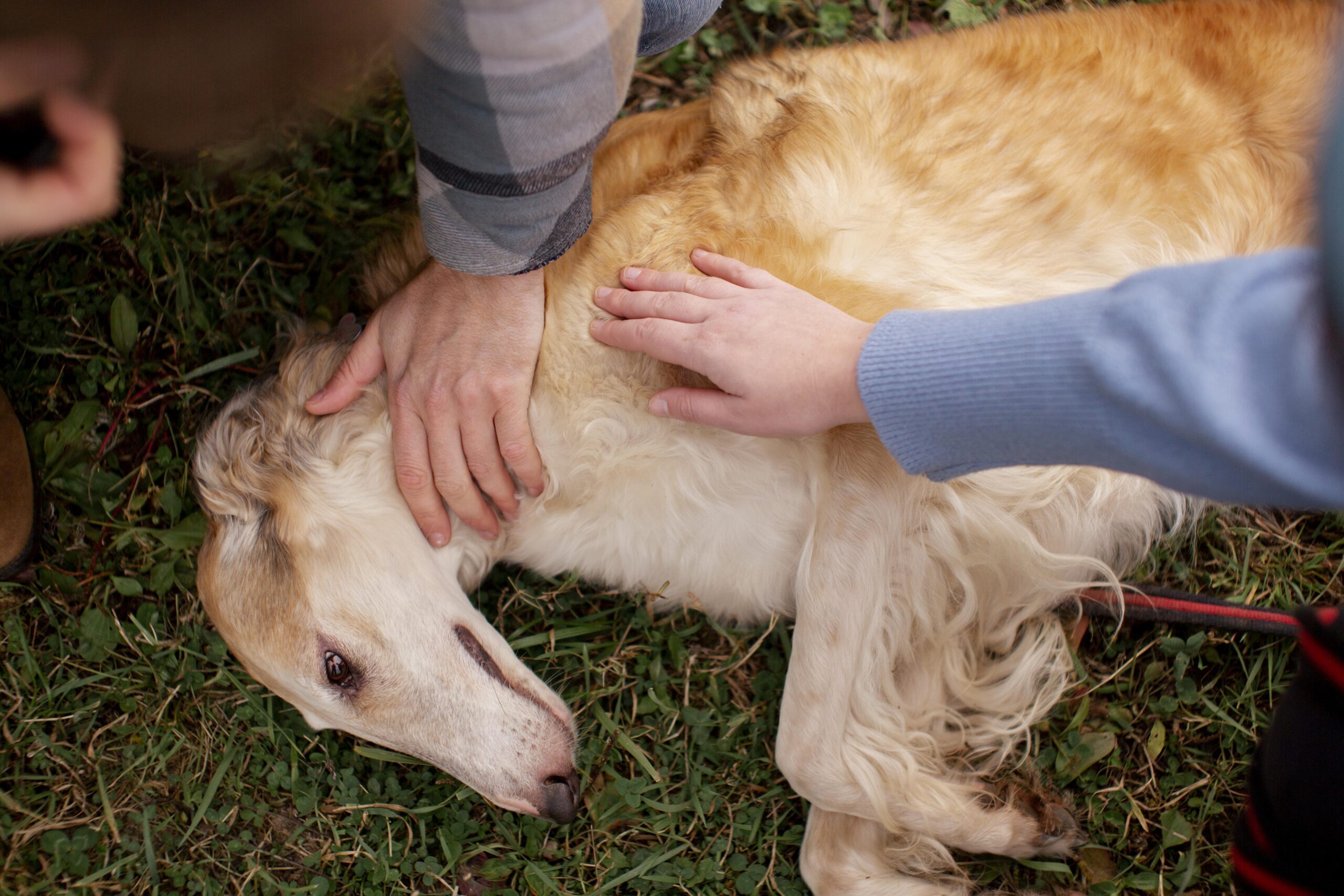Pancreatitis is the inflammation of the pancreas, which is an uncomfortable, painful situation. Although this sickness is more common in some species of dogs, we can still see pancreatitis in all dogs regardless of age, sex, or breed. Prognosis suits this disease if the animal is diagnosed and treated on time. This article will discuss the function of the pancreas, clinical signs, causative agents, diagnostics and treatment.
The pancreas is located in the abdominal cavity attached to the stomach and the beginning of the small intestine. It is a yellow-color-long organ that releases enzymes for digestion and regulates glucose in the body. When the dog eats the food, it will go into the stomach, where the stomach mixes the food and releases digestive enzymes to break food at the macro and micro levels. when the digestive food enters the intestine, enzymes are released from the pancreas through a duct into the small intestine. It helps in the digestion of carbohydrates, protein and fat. Enzymes in the pancreas are stored in granules in an inactivated form. During the episode of pancreatitis, enzymes released from the granules and activated within the pancreas exacerbate the situation by causing colossal discomfort.
The pancreas also releases hormones insulin and glucagon, which regulate the glucose in the body. Insulin decreases the glucose, whereas glucagon increases the glucose in the body by regulating the body’s metabolism. Any disturbance in the pancreas leads to hormonal imbalances, contributing to animal sickness. Some dogs also show signs of diabetes temporarily during the episodes of pancreatitis.
Signs and Symptoms:
- Appetite loss
- Nausea and vomiting
- Abdominal discomfort and pain
- Loose stools or diarrhea
- Fever
- Dehydration
Many dogs show painful abdomen and appetite loss. Often, nausea and vomiting are also the complaint from the owner. If there is a sign of infection, Fever may also be noted. Pancreatitis can be acute or chronic. In acute pancreatitis, the dog shows an extremely painful response, which can be an emergency condition that requires immediate veterinary attention. In chronic pancreatitis, the dog has a lifelong problem and management is done accordingly.

Endocrinopathies: A certain number of metabolic and hormonal imbalances may prone a dog to pancreatitis. High calcium in the blood (Hypercalcemia), low thyroid level and high blood sugar (Diabetes). Alterations in lipid metabolism occur in diabetes and hypothyroidism, which can predispose to pancreatitis.
Diet: eating a high-fat meal or accidentally running chicken skin, uncooked pork meat, or excessive peanut butter.
Age: most pancreatitis are reported to be expected in dogs above v seven years of age, but can occur in any age.
Drugs and Medication: most insecticides have organophosphate, which may cause pancreatitis if a dog accidentally gets into them. Potassium bromide, Trimethoprim, and azathioprine exposure also predispose pancreatitis in dogs.
Pancreatic tumour: A tumour on the pancreas can also trigger an inflammatory response in the healthy part of the pancreas, which can cause inflammation.
Genetic predisposition: Miniature Schnauzer, Terrier, and Poodle were reported to have a genetic predisposition to pancreatitis.
Trauma: any blunt trauma, such as falling from height or having car accident can cause pancreatitis
History and physical examination play essential roles in diagnosing the condition. Veterinarians mostly palpate the abdominal area to see if the animal is in pain. Other signs such as fever, lethargy, and dehydration are also noticed.
Blood work is also done to see the lipase enzyme activity and other chemical values. Still, physical examination and blood work are sometimes not enough to diagnose this issue. In this kind of case, Canine pancreatic lipase is a test to confirm the disease in dogs.
Radiography is not the best diagnosis. However, they are helpful in diagnosis along with other diagnostic tests. The accuracy of ultrasound is also better in seeing the inflamed tissue in the abdomen.

Treatment:
Canine pancreatitis is a painful condition which needs immediate treatment. Early diagnosis, management and treatment are the key to rapid recovery and good prognosis. Following are the medical management for the relief and cure
- Fluid therapy
- Antiemetic medicine for nausea
- Antibiotics are used for the infection
- Anti-inflammatory and painkiller
- Low-fat diet
Long-term management
Following are the points that is needed to prevent any pancreatitis happening again or even in the first time.
- Weight management is essential for prevention because most obese animals get metabolic problems that may predispose them to pancreatitis.
- Always provide the dog with a healthy and cooked diet if you are making it at home.
- Avoid raw food as it can cause inflammation and upset the GI system.
- Avoid changing the food abruptly and frequently.
- Always change the food by providing small food daily by adding a small quantity of the food you want to change and slowly replacing it.
- Add probiotics to the diet so that the microbial populations remain healthy and GI problems stay away from the animals.
- Always get your pet regular exercise, which will not make him fit and healthy and keep it active.
- Manage any underlying condition such as hypothyroidism and hyperlipidemia.
Treatment cost:
Treatment cost of a case of pancreatitis varies from area to area and clinic to clinic. It also depends on the intensity (acute or chronic), choice of diagnostics, and medication selection. However, an average estimate is given below
Vet visit 100-300 CAD
Blood work and diagnostic -200-1500 CAD
medication: 300-1500






2 thoughts on “Pancreatitis in Dog: What You Need to Know?”